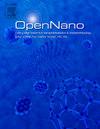有效治疗牛乳腺炎的纳米技术:在生物传感器和疫苗中的应用
Q2 Pharmacology, Toxicology and Pharmaceutics
引用次数: 0
摘要
奶牛场最重大的经济损失是由乳腺炎造成的,乳腺炎是奶牛最常见的疾病之一。乳腺炎是由许多不同的病原体引起的,如细菌、真菌和藻类,抗生素是治疗和控制的第一线。因此,正在研究其他方法来根除引起乳腺炎的病原微生物。纳米技术是一个快速发展的领域,它可以制造纳米级的新材料,并且通过提供牛乳腺炎的新治疗方法,具有巨大的潜力来彻底改变农业食品工业。考虑到目前治疗耐药细菌的方法越来越无效,开发结合纳米技术的创新产品可能提供一种可持续的动物健康解决方案,可以支持生产安全和高质量的食品,同时直接解决诸如抗菌素耐药性等关键的全球问题。此外,纳米技术为牛乳腺炎研究提供了有希望的进展,纳米疫苗提供了有针对性和有效的抗原递送,以增强奶牛的免疫反应并预防疾病。另一方面,纳米生物传感器在牛乳腺炎的早期检测中起着至关重要的作用,可以实时监测生物标志物并进行及时干预,从而减少经济损失并促进动物福利。尽管金属纳米颗粒在治疗牛乳腺炎方面具有巨大的潜力,但在其毒性、稳定性、环境安全性和生产成本方面存在一些挑战,需要仔细检查和解决,以促进其使用。考虑到纳米颗粒的潜力,如果应用到正确的领域,这些挑战可以成功地管理,考虑到纳米颗粒的潜力,这将是改善牛乳腺炎和减少牲畜农场耐药性的一种新的有效治疗方法。总之,纳米疫苗、纳米药物和纳米生物传感器在管理牛乳腺炎方面具有巨大潜力,分别提供有针对性的预防、有效的治疗和早期发现能力。本文章由计算机程序翻译,如有差异,请以英文原文为准。

Nanotechnology for effective bovine mastitis treatment: Applications in biosensors and vaccines
A dairy farm's most significant economic loss is caused by mastitis, one of the most common diseases in dairy cows. Mastitis occurs due to many different pathogens, such as bacteria, fungi, and algae, and antibiotics are the first line of treatment and control. Alternative methods are therefore being investigated to eradicate pathogenic microorganisms that cause mastitis. Nanotechnology is a rapidly growing field that can manufacture new materials at the nanoscale level and has tremendous potential to revolutionize the agri-food industry by offering new treatments for bovine mastitis. Considering the increasing ineffectiveness of current therapies for resistant bacteria, developing innovative products that combine nanotechnology may provide a sustainable animal health solution that can support the production of safe and high-quality food products while directly addressing a critical global problem such as antimicrobial resistance. Additionally, nanotechnology offers promising advancements in bovine mastitis research, with nanovaccines providing targeted and efficient delivery of antigens to enhance the cow's immune response and prevent the disease. On the other hand, nanobiosensors play a crucial role in the early detection of bovine mastitis, allowing for real-time monitoring of biomarkers and enabling prompt intervention, thus reducing economic losses and promoting animal welfare. Although metalic nanoparticles have the potential to offer great benefits in terms of treating bovine mastitis, there are several challenges related to their toxicity, stability, environmental safety, and production costs that need to be carefully examined and addressed in order to facilitate their use. Considering the potential of nanoparticles, these challenges can be successfully managed if applied to the right areas, which will be a new and efficient therapeutic method for improving bovine mastitis and reducing drug resistance in livestock farms, given the potential of nanoparticles. In summary, nanovaccines, nanodrugs, and nanobiosensors have great potential in managing bovine mastitis, offering targeted prevention, effective treatment, and early detection capabilities, respectively.
求助全文
通过发布文献求助,成功后即可免费获取论文全文。
去求助
来源期刊

OpenNano
Medicine-Pharmacology (medical)
CiteScore
4.10
自引率
0.00%
发文量
63
审稿时长
50 days
期刊介绍:
OpenNano is an internationally peer-reviewed and open access journal publishing high-quality review articles and original research papers on the burgeoning area of nanopharmaceutics and nanosized delivery systems for drugs, genes, and imaging agents. The Journal publishes basic, translational and clinical research as well as methodological papers and aims to bring together chemists, biochemists, cell biologists, material scientists, pharmaceutical scientists, pharmacologists, clinicians and all others working in this exciting and challenging area.
 求助内容:
求助内容: 应助结果提醒方式:
应助结果提醒方式:


